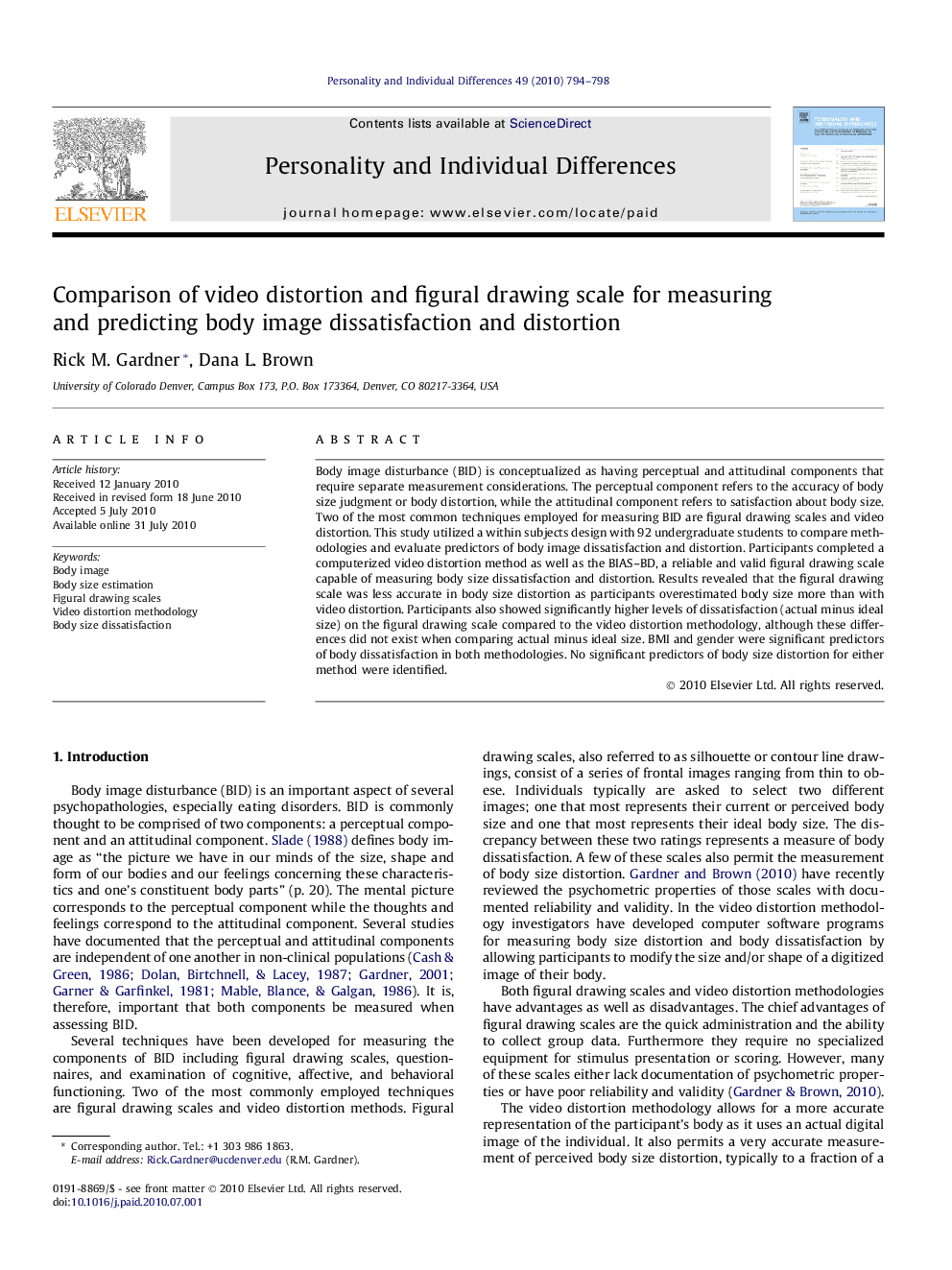| Article ID | Journal | Published Year | Pages | File Type |
|---|---|---|---|---|
| 891906 | Personality and Individual Differences | 2010 | 5 Pages |
Body image disturbance (BID) is conceptualized as having perceptual and attitudinal components that require separate measurement considerations. The perceptual component refers to the accuracy of body size judgment or body distortion, while the attitudinal component refers to satisfaction about body size. Two of the most common techniques employed for measuring BID are figural drawing scales and video distortion. This study utilized a within subjects design with 92 undergraduate students to compare methodologies and evaluate predictors of body image dissatisfaction and distortion. Participants completed a computerized video distortion method as well as the BIAS–BD, a reliable and valid figural drawing scale capable of measuring body size dissatisfaction and distortion. Results revealed that the figural drawing scale was less accurate in body size distortion as participants overestimated body size more than with video distortion. Participants also showed significantly higher levels of dissatisfaction (actual minus ideal size) on the figural drawing scale compared to the video distortion methodology, although these differences did not exist when comparing actual minus ideal size. BMI and gender were significant predictors of body dissatisfaction in both methodologies. No significant predictors of body size distortion for either method were identified.
